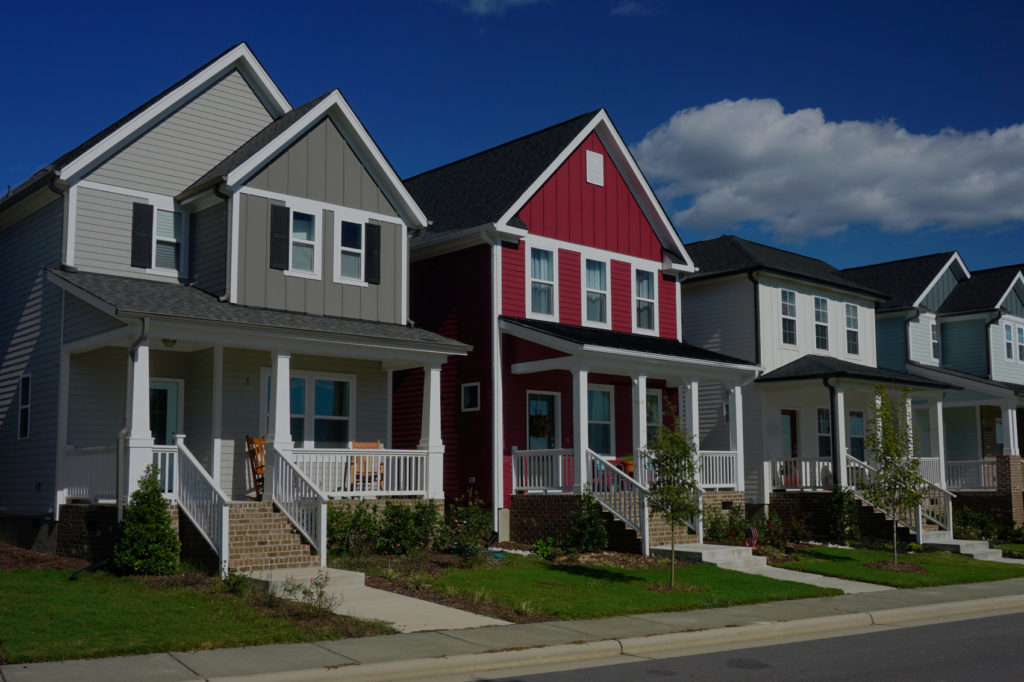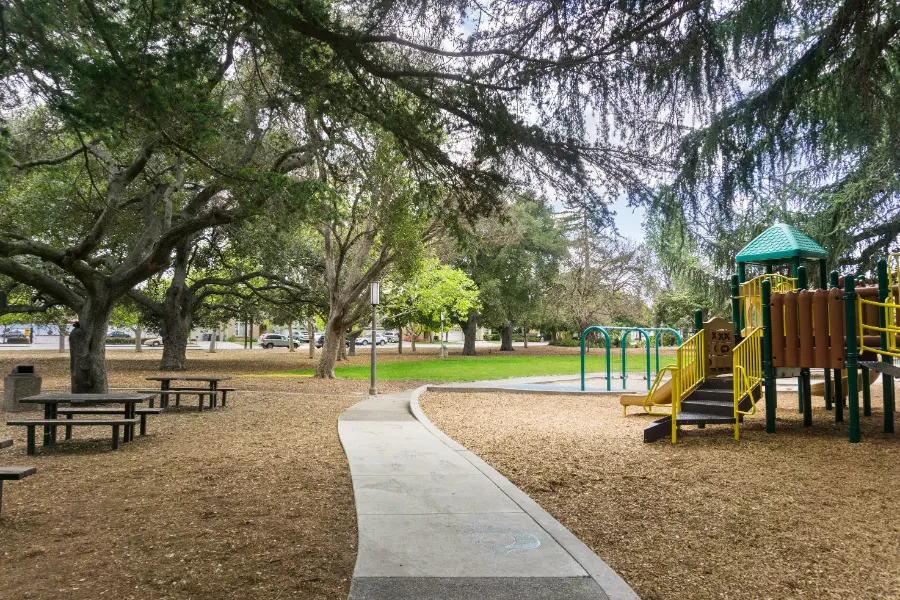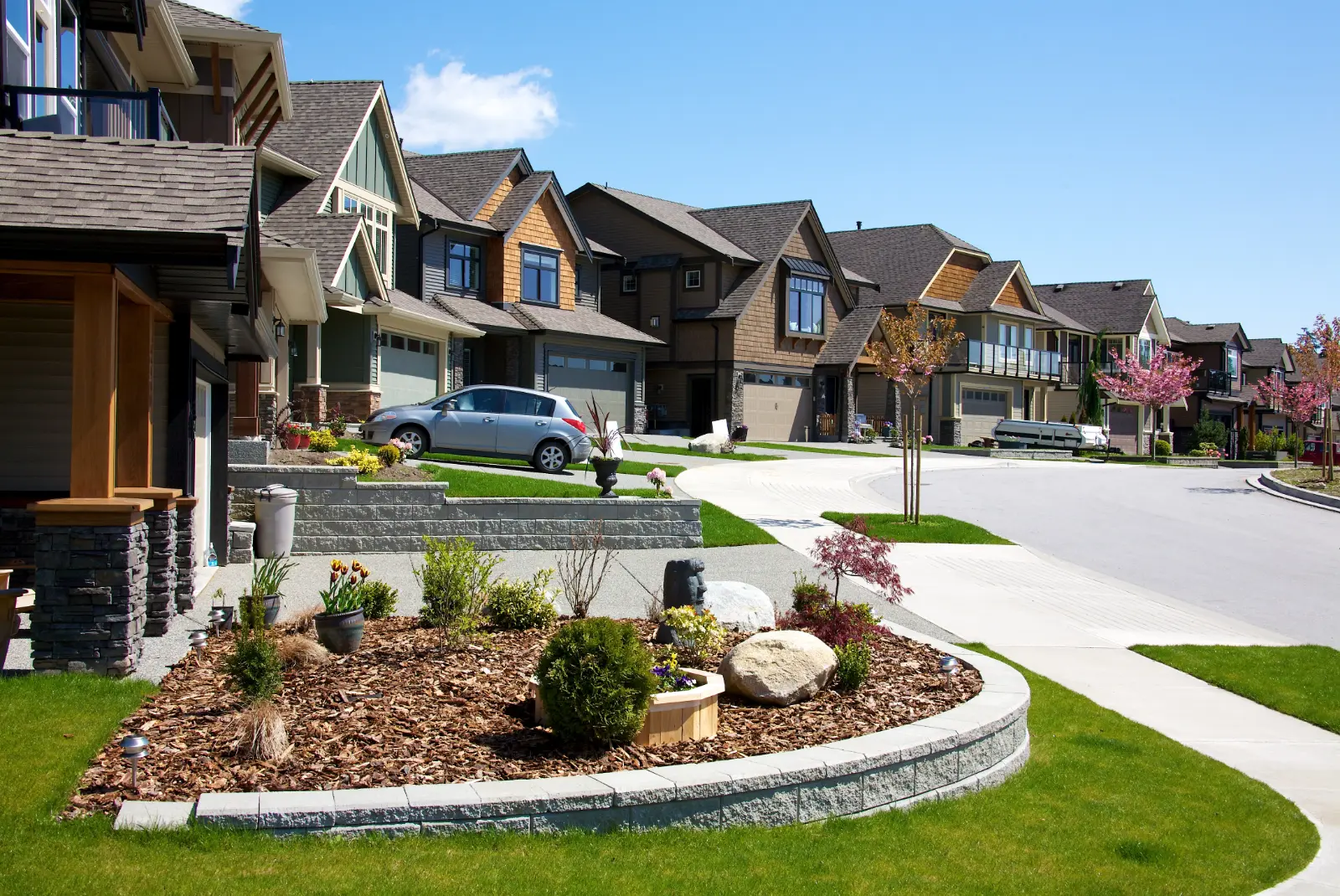Contents
Neighborhood pages are a powerful way to showcase the best of an area and attract people from outside it. As you create neighborhood webpages for your business, here are some vital tips to keep in mind when emphasizing the unique features that make any region popular among homebuyers and investors alike.
How to Choose Your Neighborhood Pages
As a realtor, you have an invaluable asset: your experience. But to make sure that your expertise is as effective and successful in today’s market, it’s important to back up those instincts with data-driven insights into what neighborhoods are most desired by buyers. In 2024, leverage keyword research and search intent analysis to discover not only popular areas but also how people are searching for them online. This will allow you to craft neighborhood pages that are specifically tailored toward potential homebuyers and investors, keeping you ahead of the competition.
Neighborhoods in Your Farming Area
Make your local farming area a priority when crafting neighborhood pages for your website. Since you’re are already familiar with the region, having successfully closed deals within these communities, writing about them should come naturally. Use high-quality images from past listings to enhance the visual appeal of the page, and make sure to highlight the community atmosphere that makes these neighborhoods such desirable places to live. In 2024, consider adding interactive maps and drone footage to engage visitors further.
Neighborhoods With High Turnover
Fast-paced areas where properties don’t stay on the market long and there is a lot of volume are typically in high demand. Try to isolate some key reasons for the area’s popularity, such as proximity to remote work hubs or sustainable living features like solar-powered homes. Convey a sense of urgency in your content to encourage buyers to act quickly on listings in these fast-moving markets.
Neighborhoods With Amenities
The presence of amenities in the area can help draw buyers to a neighborhood, especially in a competitive market with lots of similar neighborhoods within the same city limits. Some of the most popular amenities that buyers look for in 2024 include:
- Swimming pool, hot tub, or Jacuzzi
- Fitness center, sauna, or steam room
- Pickleball, Tennis or basketball courts
- Public schools within walking distance
- Security patrol or gated access
- Golf courses
- Hiking trails and greenways
- EV charging stations
Highlight these options, especially if the neighborhood offers new or upcoming amenities like a brand-new pool, community coworking spaces, or electric vehicle charging stations. Buyers, especially those looking for long-term investment opportunities, may be willing to wait for these upgrades to be completed.
Laying Out Your Neighborhood Pages
Identify Features to Write About
When you start planning out your neighborhood pages, first identify who you are trying to speak to on each one. Who is the buyer that is likely to want to live in this area?
For instance, remote workers may prioritize high-speed internet and proximity to coworking spaces, while eco-conscious families might be looking for energy-efficient homes or access to green spaces. Customize the content to address the specific needs and desires of these buyers.
For hip, downtown areas, highlight walkability and proximity to landmarks, while more suburba
To get the interest of suburban buyers who are looking at more family-friendly areas, you can point out the local schools, parks, and low crime rates.
Using AI Tools Like ChatGPT for Content Creation
In 2024 AI tools like ChatGPT are everywhere and can be super helpful in content creation especially when it comes to brainstorming ideas, structuring your pages and identifying key features to highlight for each neighborhood. AI can generate keyword rich content ideas, suggest SEO friendly structures and create initial drafts based on prompts that reflect current real estate trends.
However, while AI is a powerful tool, you don’t want your content to sound too robotic or generic. That’s why we recommend using AI as a starting point but always humanizing the tone, adding local expertise and personality to the writing. Especially for neighborhood pages where your audience expects authentic community driven insights.
Collaborating with AI can streamline the process while allowing you to maintain the authenticity and local knowledge that homebuyers and investors seek.
Photography for Neighborhood Pages
Clear, high-quality images remain crucial for 2024, but to take it further, consider adding virtual tours or drone footage to give potential buyers an immersive feel of the neighborhood.
While your content is the most important factor in whether the person stays on the page, the composition of the page is also very important. Having pictures and white space to balance the content is vital to help encourage people to take in the whole page.
Neighborhood Page Listings
Add your listings to the neighborhood page so once people are done reading about all the reasons to want to live in this neighborhood, they can see exactly what is on the market. Be sure to include a contact form so interested people can get in touch with you to set up a viewing or ask questions.
In addition to listing properties found within the neighborhood, you can also suggest visitors check out related properties in nearby areas. Link to these properties on the bottom or side of the page so interested users can get to them easily.
Lastly, you will also want to create a main neighborhoods page that can link to all of your individual neighborhood pages. See an example showcasing Asheville, NC neighborhoods.
On-Page SEO for Neighborhood Pages
On-page SEO continues to play a critical role in ensuring your pages rank well on Google. Headlines and content should include target keywords that reflect the way buyers are searching in 2024. Use tools like Ahrefs or Google Keyword Planner to discover long-tail keywords related to home-buying trends, such as “best neighborhoods for remote workers” or “eco-friendly homes in [city name]”.
Make sure your images are optimized for SEO by including descriptive alt text and compressing files to improve load times.
Header Tags
Header tags help break up the content so it doesn’t appear as one big wall of text, which might intimidate visitors on the page. Be sure to make use of H2 and H3 tags on your page (with H1 reserved for the page title only). Most people on the internet do not want to read a book; they want simple, easy-to-understand content that hits the questions they’d like answered.
Similar to a headline in a newspaper or magazine article, headers give a short, concise explanation of what to expect in the section. You can use these to signal the start of a new topic in your content by enclosing the words in the H3 tag. Try to incorporate keywords if possible to make the header tags even more effective.
Keyword Research for Neighborhood Pages
The number of people searching for a particular keyword is important, but it’s not the only relevant factor. When researching keywords, don’t just look at the number of searches. Consider the competition level and search intent. For instance, it might be easier to rank for phrases or ‘long tail keywords’ like “family-friendly neighborhoods in [city name]” rather than more generic keywords like “neighborhoods in [city name]”.
The more generic the keyword or keyword phrase is, the more difficult it will likely be. High difficulty means there is a lot of competition for the keyword, and you’ll be up against many others who want to rank at the top of the search results for that keyword. It can be easier to rank for keywords with low or medium difficulty when you begin SEO efforts.
Image SEO
Image alt text is an important factor in on-page SEO. Since the bots Google sends out to scan webpages can’t see images, the alt text is the only thing that can be indexed. The image alt text should discuss what is contained in the photo, including relevant keywords If possible.
For instance, an alt tag for a neighborhood park photo could be: “Sunny park in family-friendly [neighborhood name] with walking trails.”

Sunny park in family-friendly San Francisco bay area with walking trails.
Promoting Your Neighborhood Pages
Utilizing paid advertising to increase the page’s visibility
There are many ways to promote your neighborhood pages once they are complete. Google offers Pay Per Click (PPC) advertising, where you only pay when someone clicks on your ad and visits the corresponding page on your site. These can be ideal if you have a limited budget, as you can specify exactly how much you want to spend per day or month. When you hit this spending limit, Google will no longer display the ad.
Sharing the page on social media and other online platforms
When running a business, you need to get the word out! Leveraging platforms such as Facebook and Instagram is one way to increase visibility by targeting demographics that may be interested in your services.
You can also collaborate with local influencers or social media personalities who will refer their followers right towards what you have to offer – giving potential customers an easy pathway for discovering your products/services.
Reaching out to local businesses and organizations for cross-promotion opportunities
Explore partnerships with local businesses for cross-promotion. Feature local restaurants, shops, or parks on your neighborhood pages and collaborate with them on guest blog posts or joint promotions to boost visibility. Not only will this drive traffic, but it will also position you as a community resource, further enhancing your reputation.
Conclusion
Creating well-researched, optimized, and formatted neighborhood pages is an important part of attracting buyers. Utilize these tips above so your brokerage’s neighborhood pages draw the right buyers both near and far.
Frequently Asked Questions (FAQs) for Writing Neighborhood Pages
Why are neighborhood pages important for real estate websites?
Neighborhood pages offer real estate professionals an opportunity to showcase the unique aspects of various areas, providing potential buyers with key information about amenities, schools, lifestyle, and property listings. These pages help attract buyers by addressing their specific needs and preferences, making them an essential part of a real estate marketing strategy.
How can I choose which neighborhoods to feature on my real estate website?
Start by focusing on areas where you have the most expertise, such as your local farming area or neighborhoods where you’ve had successful sales. Use data-driven insights from keyword research and search intent analysis to discover which neighborhoods are trending among homebuyers and investors in 2024, helping you create pages tailored to their needs.
What should I include in a neighborhood page for real estate?
A well-rounded neighborhood page should include:
- A detailed community overview that highlights local amenities like schools, parks, and shopping centers.
- Photos or virtual tours to give potential buyers a visual feel of the area.
- Interactive maps and any special neighborhood features such as proximity to public transportation or entertainment.
- Property listings with links to related neighborhoods or homes. This combination of visuals, information, and functionality helps visitors make informed decisions.
How do I create neighborhood pages that rank on Google?
To ensure your neighborhood pages rank well on Google, follow SEO best practices:
- Conduct keyword research to identify relevant long-tail keywords specific to the neighborhood.
- Optimize content with keywords in titles, headers, and meta descriptions.
- Use alt text for images and compress them for faster load times.
- Structure your content using H1, H2, and H3 tags for easy readability. By following these steps, you can improve your visibility on Google and attract more traffic to your real estate website.
What amenities should I highlight when promoting a neighborhood?
Popular amenities in 2024 include:
- Community pools, fitness centers, and sports courts
- Walking trails, parks, and greenways
- Nearby schools and shopping centers
- EV charging stations and sustainable features like solar energy Focus on amenities that reflect the lifestyle of potential buyers, such as family-friendly features or proximity to remote work hubs.
How can I make my neighborhood pages stand out from competitors?
To differentiate your neighborhood pages, incorporate:
- Personalized, community-driven insights based on your local expertise
- Interactive features such as maps, virtual tours, or drone footage
- A balance of compelling visuals and informative content
- Collaborations with local businesses for cross-promotion
- Engaging content that speaks directly to your target buyers’ needs, such as remote workers, eco-conscious families, or luxury home buyers.
How can AI tools like ChatGPT help in creating neighborhood pages?
AI tools, such as ChatGPT, can assist in content creation by helping with brainstorming, structuring pages, and generating keyword-rich ideas based on current real estate trends. While AI can quickly draft initial content, it’s important to humanize the final version, adding your local expertise and personal insights to create more authentic and engaging pages.
How often should I update my neighborhood pages?
It’s important to update your neighborhood pages regularly to reflect changes in the market, new property listings, or new amenities in the area. A good rule of thumb is to review your pages every 3-6 months, or more frequently if there are significant changes in the neighborhood or real estate trends.
Keeping content fresh not only helps with SEO rankings but also ensures potential buyers are receiving the most up-to-date information.
How can neighborhood pages help with local SEO for realtors?
Neighborhood pages can significantly boost your local SEO by targeting area-specific keywords, such as “homes for sale in [neighborhood name].” Including location-specific content, such as nearby schools, restaurants, and attractions, will increase your chances of appearing in local search results. Additionally, using Google My Business listings and obtaining backlinks from local businesses or directories can further enhance your visibility in local searches, driving more organic traffic to your site.

Written by : Scott Russell
By Scott Russell of Freestone Properties



Great clickbait title (you got me), but the article doesn’t deliver on it’s promise. It’s more like, “Neighborhood pages: what they are and the basics of how to create them.”
Sorry you did not get any value. Thanks for stopping by.